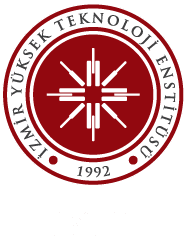ICTP-ECAR Seminar: Prof. Dr. Barbaros Özyılmaz

Speaker: Barbaros Ozyılmaz
Professor, Head of MSE , National University of Singapore (NUS)
Title: Synthesis, properties and applications of 2D materials: A case study of materials research philosophy at NUS
Date : 18 July 2022
Time : 11:00
Place : Dept. of Physics Seminar Room
Atomic engineering, reliability and process compatibility are key challenges in commercializing 2D materials. At NUS, with its many research centres on advanced materials, efforts are underway to address this key bottleneck with surprising results. In a surprising twist, industrial research gives rise to fundamental discoveries in basic science. This new realization is now also having significant impact on funding policies at the national level. I will give specific examples by discussing my own groups approach work on atomically thin amorphous carbon, i.e. amorphous graphene, nano-porous graphene foam and Co doped black phosphorus.
Amorphous thin films are many advanced industries, e.g. essential for enabling semiconducting device scaling, increase data storage densities, etc. Surprisingly very little was known about such materials in the atomic limit. In fact for a material as important as amorphous SiO2 even its atomic structure remains hotly disputed. In the first part of my talk I will show, that similar to crystalline graphene that 2D amorphous carbon/graphene is equally stable as a free standing membrane. But unlike graphene it does not neither require high synthesis temperature nor a catalytic substrate. In fact the physical properties of such stable, free-standing monolayer amorphous carbon are ideal as diffusion barriers in applications such as heated assisted magnetic recording and copper interconnects and far superior then even idealized graphene. For example, unlike graphene, they can be directly grown on SiO2 and their performance exceeds the 10-years lifetime industry requirement based on time-dependent dielectric breakdown measurements. Furthermore, directly grown MAC on Cu lines with cross section of 80 nm by 200 nm not only preserve device integrity but also lead to reduction in line resistance.
In the second part of my talk I will discuss the synthesis of a novel nanoporous graphene foam. This structure is a monolithic, layered composite of 3 carbon allotropes, consisting of a stiff, sp3-rich backbone, covered by a conductive graphite layer, followed by an outermost layer of micropore-rich graphene. This monolithic carbon foam (MCF) hosts a hierarchy of 3D pores, ranging in size and providing high pore accessibility. MCF exhibits electrical conductivity as large as 120 S/cm, exceeding conventional carbon-based electrode performance and a Vickers hardness of over 900 MPa exceeding that of nuclear graphite allowing for a wide range of applications such as energy storage, filtration and catalysis. As a proof of concept, we demonstrate a supercapacitor with ten times longer device life time when compared to commercial devices. Last not but least, I will discuss a new route to synthesize 2D magnetic semiconductors based on interstial doping on black phosphorus with cobalt.
REFERENCES
[1] Synthesis and properties of free-standing monolayer amorphous carbon; Chee-Tat Toh, Hongji Zhang, Junhao Lin, Alexander S. Mayorov, Yun-Peng Wang, Carlo M. Orofeo, Darim Badur Ferry, Henrik Andersen, Nurbek Kakenov, Zenglong Guo, Irfan Haider Abidi, Hunter Sims, Kazu Suenaga, Sokrates T. Pantelides & Barbaros Özyilmaz ; Nature (Jan 2020).
